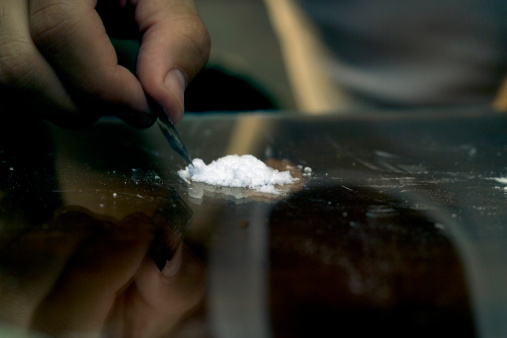When news recently broke about the powdered form of alcohol called “Palcohol” getting the okay, some people were overjoyed and others were left scratching their heads over the recklessness of the decision. Well, it looks like the approval was actually given in error. The Alcohol and Tobacco Tax and Trade Bureau rescinded their label approval on April 21st due to a discrepancy regarding each bag’s fill level and how much powder is packaged in an individual bag. Whoops!
Palcohol was basically created as an alcohol, like vodka or rum, that is made in a powder form as opposed to its more conventional liquid state. Simply mix it into any liquid drink or eat plain and presto-change-o… instantaneous inebriation! We admit that there are some situations where Palcohol might come in handy, such as when you’re camping or adventuring and you don’t want to lug big ol’ bottles of booze around. That’s about it, though, because otherwise Palcohol pretty much sounds like a nightmare. Consider the various risks and problems that selling powdered alcohol will invariably cause: discrete alcohol abuse by underage drinkers and alcoholics, unregulated consumption, and possible use as a date rape drug. But perhaps the most pressing concern is that users of Palcohol will be tempted to snort it, which will allow the alcohol to enter into their bloodstreams quickly and give them an almost instantaneous buzz, at the same time doing considerable damage to the nasal passages.
The website for the Alcohol and Tobacco Tax and Trade Bureau recently released a statement that Palcohol’s parent company, Lipsmark, was going to surrender the approvals that they had received. It seems like a big “error” to make but honestly, who knows what went down there? Maybe some mid-level bureaucrat was too busty snorting a pile of “Lemon Drop” to stop and think, “Hey, maybe allowing powdered alcohol to be marketed isn’t such a good idea.”
Why do we feel the need to make everything so freakishly convenient? It’s not that hard to use actual vodka; after all, even frat guys, who are usually not the sharpest tools in the tool shed to begin with, seem to have a handle on the concept. With new products aimed at increasing convenience like the meal replacement Soylent popping up you have to wonder what the end goal is, or if convenience is sustainable. For those of you who haven’t heard of soylent, it’s a drink being developed that meets the body’s daily nutritional needs, while excluding many of the calories, additives and preservatives that traditional solid foods might contain. Unfortunately, it doesn’t look very appetizing; it’s a thick, beige goopy liquid.
And it takes out the fundamental aspect of food from eating, which is usually the best part about a meal.
Software engineer Rob Rhinehart, the designer and inventor of soylent, is right on the money when he says that society has horrible eating practices: the food we eat isn’t of the best quality, we eat way too much of it, and our farming and livestock practices leave a lot to be desired, even in this day and age. Then, of course, there’s the whole inconvenience factor that plays into this, because traditional meals require cooking and actual consumption. Also in its favor is cost-effectiveness: soylent is cheap at about $5 per day. For families who are unable to spend a lot of money on groceries, soylent could be a godsend, not to mention an amazing tool for emergency situations or for people with digestive issues or diseases. However, it seems unlikely that the average person will be willing to part with all the delicious solid food the world has to offer and fun meal times for a quick, mysterious meal-drink anytime soon, no matter how cheap or nutritious it may be.
Try meal replacements if you please (in moderation, of course, because many of them, soylent included, don’t usually meet every nutritional need your body has), but for now your dreams of eating a mojito with a Fun Dip “Lik-A-Stix” will have to wait.












-300x169.jpg)




